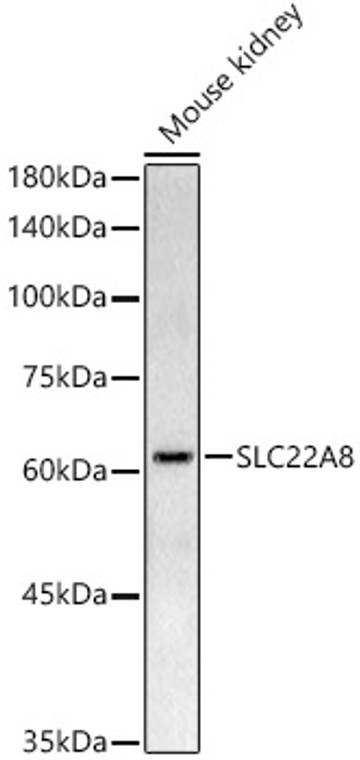| Function | Functions as an organic anion/dicarboxylate exchanger that couples organic anion uptake indirectly to the sodium gradient. Transports organic anions such as estrone 3-sulfate (E1S) and urate in exchange for dicarboxylates such as glutarate or ketoglutarate (2-oxoglutarate). Plays an important role in the excretion of endogenous and exogenous organic anions, especially from the kidney and the brain. E1S transport is pH- and chloride-dependent and may also involve E1S/cGMP exchange. Responsible for the transport of prostaglandin E2 (PGE2) and prostaglandin F2(alpha) (PGF2(alpha)) in the basolateral side of the renal tubule. Involved in the transport of neuroactive tryptophan metabolites kynurenate and xanthurenate. Functions as a biopterin transporters involved in the uptake and the secretion of coenzymes tetrahydrobiopterin (BH4), dihydrobiopterin (BH2) and sepiapterin to urine, thereby determining baseline levels of blood biopterins. May be involved in the basolateral transport of steviol, a metabolite of the popular sugar substitute stevioside. May participate in the detoxification/ renal excretion of drugs and xenobiotics, such as the histamine H(2)-receptor antagonists fexofenadine and cimetidine, the antibiotic benzylpenicillin (PCG), the anionic herbicide 2,4-dichloro-phenoxyacetate (2,4-D), the diagnostic agent p-aminohippurate (PAH), the antiviral acyclovir (ACV), and the mycotoxin ochratoxin (OTA), by transporting these exogenous organic anions across the cell membrane in exchange for dicarboxylates such as 2-oxoglutarate. Contributes to the renal uptake of potent uremic toxins (indoxyl sulfate (IS), indole acetate (IA), hippurate/N-benzoylglycine (HA) and 3-carboxy-4-methyl-5-propyl-2-furanpropionate (CMPF)), pravastatin, PCG, E1S and dehydroepiandrosterone sulfate (DHEAS), and is partly involved in the renal uptake of temocaprilat (an angiotensin-converting enzyme (ACE) inhibitor). May contribute to the release of cortisol in the adrenals. Involved in one of the detoxification systems on the choroid plexus (CP), removes substrates such as E1S or taurocholate (TC), PCG, 2,4-D and PAH, from the cerebrospinal fluid (CSF) to the blood for eventual excretion in urine and bile. Also contributes to the uptake of several other organic compounds such as the prostanoids prostaglandin E(2) and prostaglandin F(2-alpha), L-carnitine, and the therapeutic drugs allopurinol, 6-mercaptopurine (6-MP) and 5-fluorouracil (5-FU). Mediates the transport of PAH, PCG, and the statins pravastatin and pitavastatin, from the cerebrum into the blood circulation across the blood-brain barrier (BBB). In summary, plays a role in the efflux of drugs and xenobiotics, helping reduce their undesired toxicological effects on the body. |







